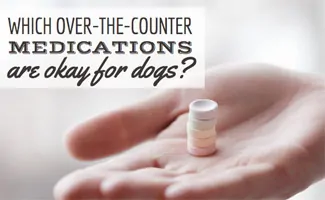How Much Does a Vet Visit Cost? Real Numbers, Hidden Fees & How to Prepare
When you purchase through links on our site, we may earn a commission. Here’s how it works.
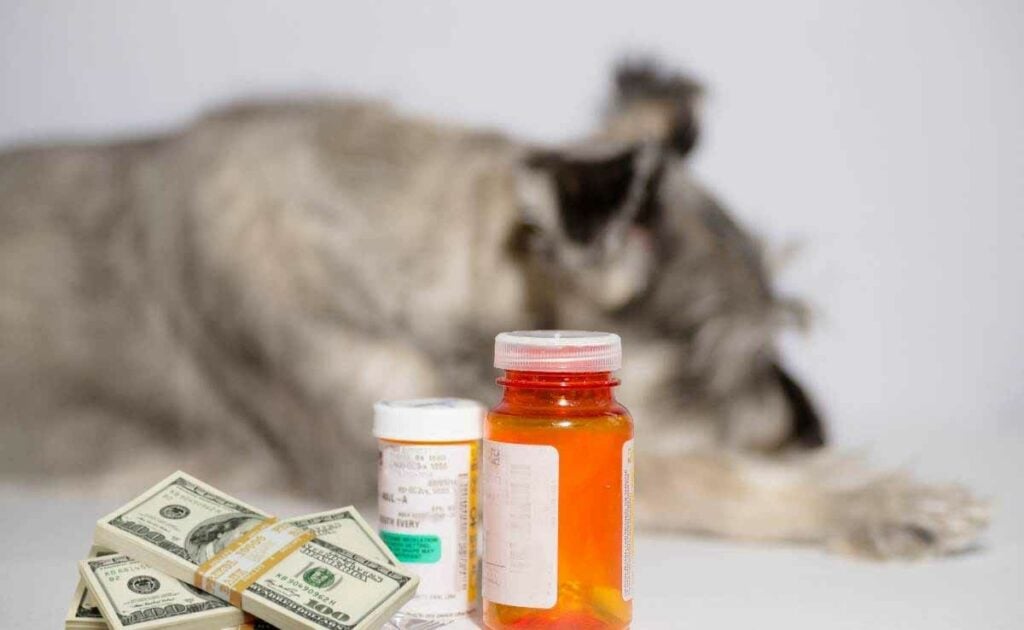
Think vet visits just mean a quick checkup and a small bill? Not anymore.
Table of Contents
Veterinary bills are skyrocketing. What used to be a $60 visit can now balloon into hundreds, sometimes thousands, before you’ve even made it back to the parking lot. And too many pet parents are getting blindsided by invoices that feel more like a car repair estimate than a checkup.
In this guide, I’m pulling back the curtain on what routine vet visits actually involve, why vet visit costs are climbing, and how to prepare without draining your bank account or compromising your dog’s health.
What Happens During a Routine Vet Visit? (And What It’ll Likely Cost You)
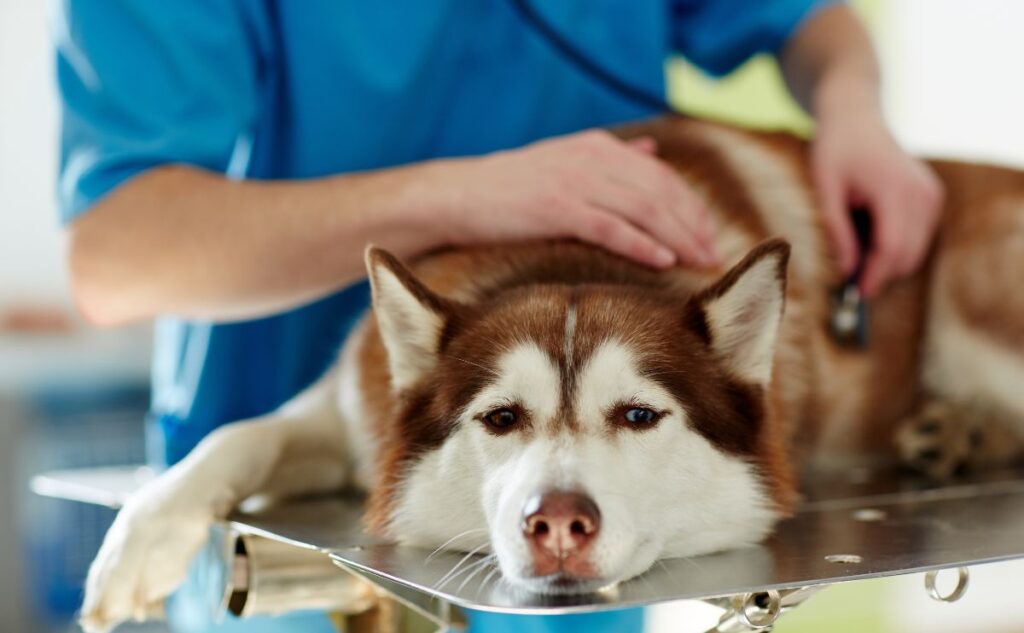
Walking into the vet’s office for an annual exam can feel like no big deal until your dog shoots you that betrayed look from the exam table.
But underneath the drama, wellness visits are one of the most important things you can do for your dog’s long-term health. They catch silent issues before they explode into full-blown emergencies.
A standard appointment usually lasts 20–30 minutes and includes far more than a once-over and a vaccine or two.
Physical Wellness Exams: More Than Just a Quick Look
Your vet will do a nose-to-tail check: eyes, ears, mouth, teeth, heart, lungs, skin, joints, and belly. They’re feeling for lumps, signs of pain, heart murmurs, or early signs of disease.
And yes, you’ll probably have the weight conversation. If your dog’s putting on extra pounds, expect guidance on diet, portion control, and exercise.
Cost: $50-$150, depending on location and services bundled in. This does not include fecal tests, bloodwork, vaccines, or other routine procedures.
Some wellness plans (offered by pet insurers or local vets) can lower annual exam costs by spreading care out over 12 months.
Heartworm Testing & Preventatives: The Cost of Skipping Could Be Deadly
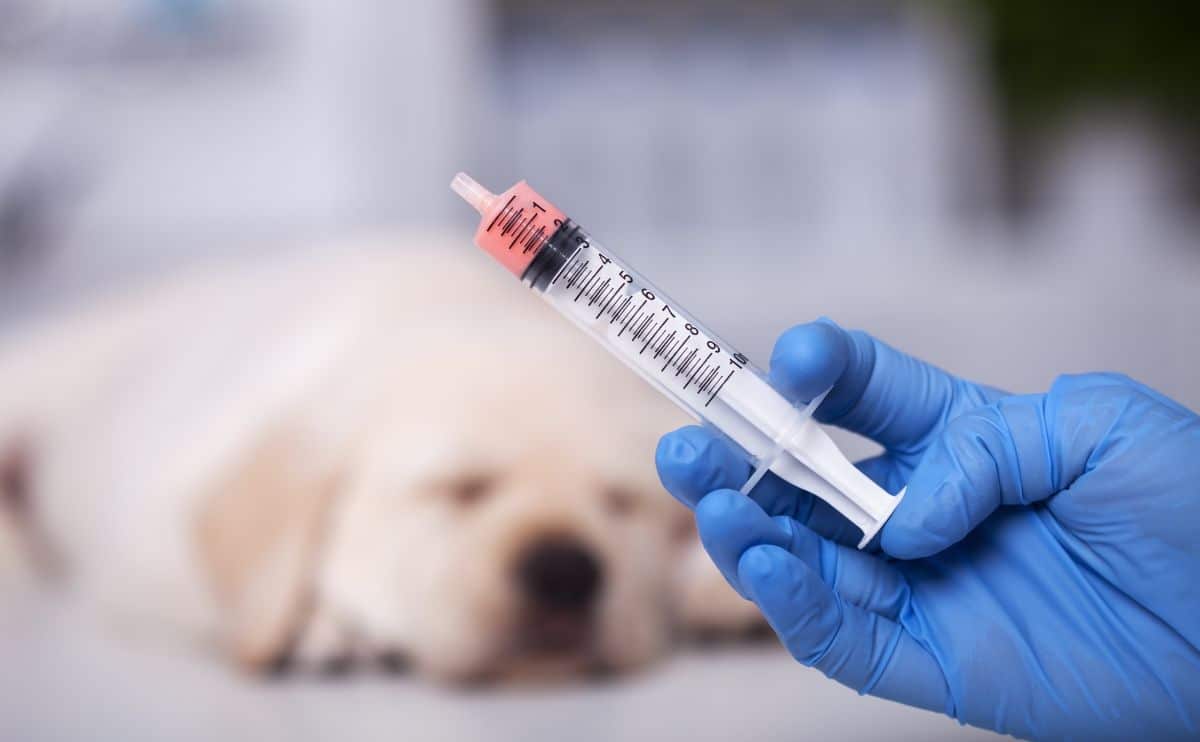
It only takes one mosquito bite. That’s all it takes to infect your dog with heartworms, parasitic invaders that can damage the lungs, heart, and arteries before you even notice a symptom.
Treatment? Brutal. It involves months of painful injections, strict crate rest, and $1,000+ in vet bills.
That’s why the American Heartworm Society urges pet owners to follow the “Think 12” rule:
- Test for heartworm every 12 months
- Give preventatives 12 months a year
Skipping doses or seasonal use is risky, especially as climate change expands mosquito season into year-round territory in many regions.
What It Costs to Stay Protected
A 4Dx blood panel (a heartworm test that also screens for Lyme, Ehrlichia, and Anaplasma) runs between $30 and $220, depending on your vet and location.
Monthly preventatives may seem expensive upfront, but they’re a fraction of the cost of treatment. And they’re far less traumatic for your dog.
Heartworm Preventative Costs (Large Dog: 50–100 lbs)
| Product | Quantity | Cost |
|---|---|---|
| Heartguard Plus | 6-pack | $42-$85 |
| Heartguard Plus | 12-pack | $135 |
| Iverhart | 6-pack | $46 |
| Iverhart | 12-pack | $70 |
| Nexgard Plus | 12-pack | $470 |
Pro Tip: Ask your vet about rebates, bulk discounts, and generic equivalents. Many pharmacies offer price matching or auto-ship savings.
Fecal Exams: The $30 Test That Could Save You Thousands

Not all parasites make themselves known.
Hookworms, whipworms, and Giardia can quietly wreak havoc on your dog’s gut, leading to everything from chronic diarrhea to nutrient deficiencies and long-term intestinal damage.
The worst part? You might never see a single worm.
That’s why vets often request a fresh stool sample or perform an in-office swab to scan for parasite eggs and larvae under a microscope.
Cost: $30 to $220, depending on the clinic and whether the test is part of a broader diagnostic panel.
When Fecal Testing Matters Most
- Puppies (who are more vulnerable and may have picked up parasites from mom or littermates)
- Dogs who frequent daycare, parks, or communal areas
- Dogs with digestive issues like soft stool, gas, or sudden weight loss
- After bringing home a rescue or shelter pet, even if they look healthy
Skipping this test might save a little money today, but if you miss a parasite infestation, you could be looking at repeat vet visits, medications, and a miserable dog.
Dental Health: The Expensive Consequences of Ignoring Your Dog’s Teeth
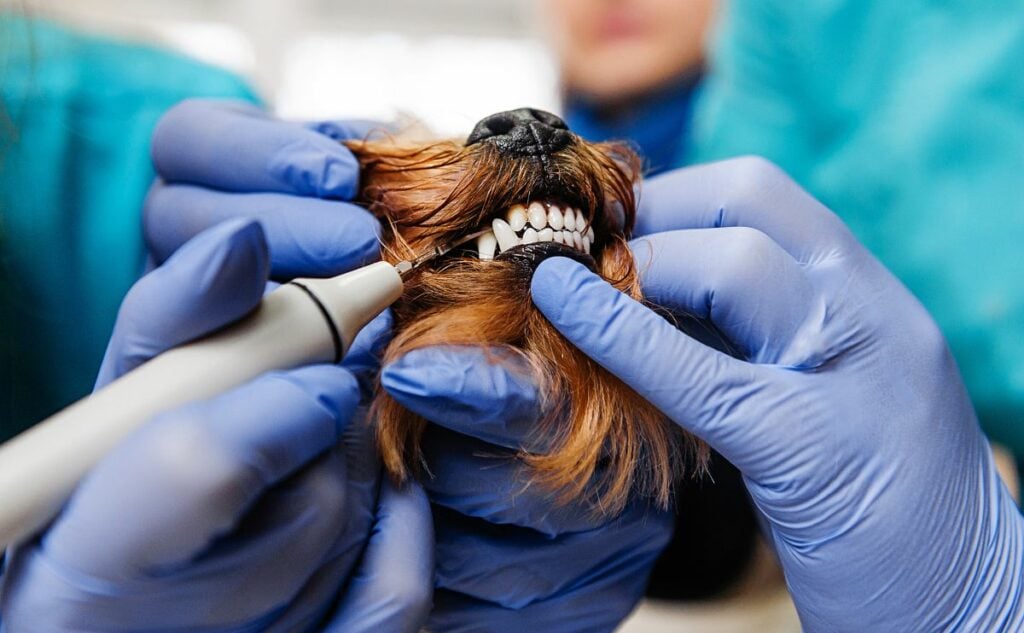
That foul breath wafting up during snuggles?
It’s not just “dog breath.” It’s likely plaque, tartar, or early-stage dental disease.
According to the American Veterinary Medical Association, over 80% of dogs show signs of dental disease by age three. And once it sets in, it doesn’t just stay in the mouth.
Bacteria from untreated gums can enter the bloodstream, damaging the heart, liver, and kidneys and potentially cutting your dog’s life short.
Oh, and the vet bills? They’ll hurt, too.
The Real Cost of a Dental Cleaning
If your vet recommends a professional dental cleaning, here’s what you might see on the invoice:
- Oral exam – Around $55 (sometimes waived)
- Pre-anesthetic bloodwork – $200+ to ensure safe sedation
- Dental X-rays – $60 to $80 to assess what’s happening below the gum line
- Dental cleaning (under anesthesia) – $300 to $700
- Tooth extractions – $50 to $260 per tooth
- Advanced oral surgery (like a root canal) – $1,500 to $3,000
How to Avoid the Big Bill
- Brush your dog’s teeth at least a few times a week (daily is best).
- Use vet-approved dental chews and rinses to reduce plaque.
- Schedule annual dental exams and cleanings. Yes, even if your dog “hates the vet.”
- Consider pet dental insurance that may cover procedures like cleanings, extractions, and root canals.
Skipping oral care isn’t just a dental issue, it can be a life-shortening, budget-busting mistake.
Ear Care: Small Issues, Big Pain (and Bigger Bills)

A little head shake. Some scratching. A funky smell you hope is just dog breath. Ear issues creep in quietly, but they can escalate fast.
Moisture, allergies, yeast, or a rogue blade of grass can trigger a full-blown ear infection. And once your dog starts whining, tilting their head, or avoiding touch? You’re likely past the “wait and see” stage.
Treating an ear infection isn’t just a matter of drops and done. Here’s what the bill might look like:
- Ear swab/cytology – $35 to $50 to identify bacteria, yeast, or mites under a microscope
- Treatment & medication – $100 to $250, depending on severity and whether both ears are affected
And if it’s a chronic issue? Your vet may recommend long-term maintenance products, diet changes, or referral to a dermatologist.
Nail Injuries: Tiny Tear, Big Ouch (And a Surprisingly Big Bill)

You wouldn’t think a toenail could cause that much drama until your dog yelps, starts limping, and leaves a trail of blood across your kitchen floor.
Nail injuries, especially torn dew claws, are shockingly common. Dogs catch them on fences and carpets, even just from landing wrong after jumping off the couch. And if the quick (the sensitive tissue inside the nail) is exposed, it’s painful, prone to infection, and often needs more than just a bandage.
What It Actually Costs: My Dog’s Dew Claw Disaster
Back in December 2017, my dog tore her dew claw so badly that her quick was exposed. Here’s what the vet bill looked like:
- Office visit: $45
- Sedation: $50 (she was in pain and too squirmy for a safe procedure)
- Nail removal: $20
- Antibiotics (Cephalexin 250mg, 40 count): $25
Total: $140 for a single injured nail.
And that’s assuming no infection, no complications, and no after-hours emergency surcharge.
Plus, I live in a smaller town, and this was nearly a decade ago. Chances are, that bill would be higher today, especially in a city.
How to Dodge the Nail Drama
- Keep nails short, especially dew claws. They grow fast, curve in odd directions, and snag easily.
- Use a nail grinder if your dog panics at the sight of clippers. It’s quieter and reduces the risk of splintering.
- Condition your dog to paw handling early; don’t wait for an injury to teach them that touch is okay.
- If a nail tears and the quick is exposed or bleeding won’t stop, get to the vet. Waiting can lead to infection and a higher bill.
Nail trims typically cost $10 to $30, but you can save long-term by learning to do it yourself. Here’s how to safely trim your dog’s nails at home.
A little effort with a trim now can save you from a $200 emergency visit later and spare your pup some serious pain.
Flea & Tick Prevention: Not Just a Summer Problem

If you’ve ever dealt with a flea infestation, you know the misery isn’t limited to your dog. It spreads to your carpets, couch, car, and sanity.
And ticks? One bite can trigger Lyme disease, Ehrlichiosis, or even paralysis.
Despite the myths, flea and tick prevention isn’t just for summer. In many parts of the U.S., pests thrive year-round. And once they’re in? They’re hard and expensive to get rid of.
The Cost of Staying Protected
There are two main types of vet-recommended preventatives:
- Prescription-only options with broad coverage against fleas, ticks, and mites
- Topicals and chewables (monthly or every 3 months)
Here’s what you might pay:
- Simparica TRIO, NexGard, or similar (6-pack) – Around $127
- Bravecto (1 dose, lasts 3 months) – About $60 per dose
That might sound steep until you compare it to treating flea allergy dermatitis, tick-borne disease, or fumigating your home.
A note on safety: Some pet parents have reported side effects of Bravecto. If you’re unsure, talk to your vet or review the latest FDA safety communications before starting treatment.
The best product for your dog depends on their age, size, health history, and where you live. There’s no one-size-fits-all fix, only what’s safest and most effective for your pet.
How to Save on Parasite Prevention
- Ask your vet about rebates on 6- or 12-month supplies
- Look for auto-ship discounts from reputable online pharmacies
- Have multiple pets? Consider bulk or multi-pet bundles
- Some pet insurance plans reimburse for preventatives if you add wellness coverage
Skipping meds might save you $20 this month. But it could cost you hundreds later in vet bills, pest control, and endless laundry cycles.
Consistency is cheaper than crisis.
Vaccines: Protection That Pays Off
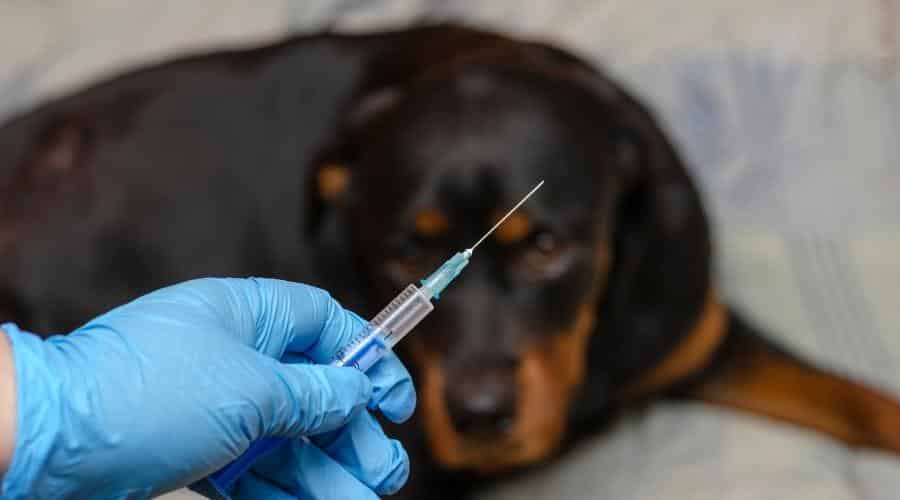
Vaccinations aren’t just a checkbox, they’re your dog’s first line of defense against deadly (and expensive) diseases. Rabies, parvo, distemper, kennel cough, these aren’t just “puppy problems.” Adult dogs need protection, too, and vaccine schedules change based on age, risk, and lifestyle.
So, what does your dog actually need?
That depends on where you live, whether your dog goes to parks or daycare, and even their exposure to ticks. Most vets follow a core vs. lifestyle-based approach to vaccine recommendations.
Not sure which shots your pup needs or when? Check out our puppy vaccine guide for a timeline by age and exposure risk.
Common Canine Vaccines & What They Cost
| Vaccine | Purpose | Cost |
|---|---|---|
| DAPP/DA2PP | Core combo (distemper, adenovirus, parainfluenza, parvovirus) | $7-$55 |
| DHLP-PV | Expanded combo (adds leptospirosis) | $23-$45 |
| Leptospirosis (standalone) | For dogs exposed to wildlife or contaminated water | $27-$93 |
| Lyme | For dogs in tick-prone regions | $54 |
| Bordetella (kennel cough) | Required for daycare, grooming, boarding | $27-$93 |
| Rabies (3-year) | Required by law in most states | $20-$93 |
How to Keep Vaccine Costs Manageable
- Look into low-cost vaccine clinics offered by shelters or local nonprofits
- Ask your vet about bundled wellness packages
- Keep an updated record; late boosters can mean restarting a series, which costs more
- Some pet insurance wellness add-ons cover vaccines and annual exams
Vaccines may feel like just another line item, but they can save you thousands in treatment costs and keep your dog safe from heartbreakingly preventable illnesses.
Spay & Neuter: The Surgery That Saves in More Ways Than One

It’s one of the most common vet procedures and also one of the most misunderstood. Spaying or neutering your dog isn’t just about preventing puppies. It can dramatically reduce health risks, behavioral issues, and future medical bills.
Why It Matters
- Spayed females are less likely to develop mammary tumors and uterine infections
- Neutered males have a lower risk of prostate problems and testicular cancer
- It can also curb unwanted behaviors like roaming, marking, and aggression in some dogs
And yes, it saves lives. Fewer surprise litters means less strain on shelters and fewer dogs being euthanized due to overcrowding.
What It Costs
Spay or neuter surgery typically ranges from $100 to $400, depending on your dog’s size, age, sex, and health.
Larger dogs, females, or dogs in heat can cost more due to surgical complexity and anesthesia needs.
How to Save
- Check with local animal shelters or rescue groups; many offer low-cost spay/neuter clinics
- Some municipal programs provide discounts or vouchers for qualifying households
- Puppy wellness plans from vet clinics may bundle the cost into a monthly payment
- A few pet insurance wellness add-ons even reimburse for sterilization surgery
It’s a one-time cost with a lifetime of benefits for your dog’s health, your peace of mind, and your future bank balance.
Anal Gland Expression: Unpleasant but Necessary
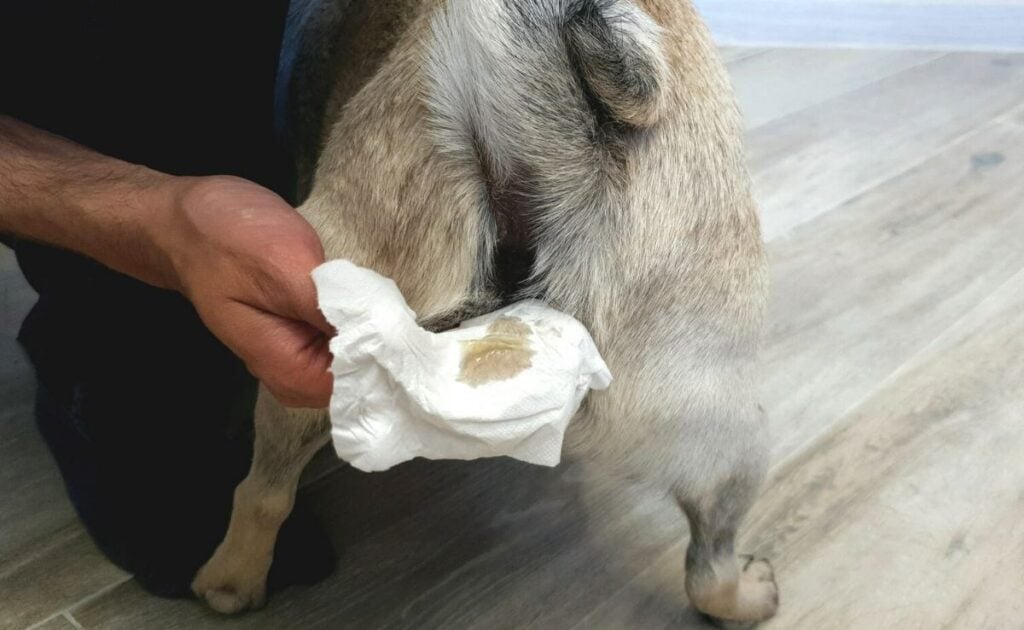
That mysterious scooting across the carpet?
That sudden fishy smell?
Yeah… you’re probably dealing with impacted anal glands.
Dogs have two small sacs near their rectum that naturally empty when they poop. But sometimes, especially in smaller breeds, they don’t drain properly, leading to swelling, discomfort, and even infection.
What It Costs
Anal gland expression typically costs $25 to $60 per visit.
It’s quick, a little messy, and definitely better left to the pros (unless you really love rubber gloves and awkward squatting).
Some dogs need it every few months, while others go a lifetime without an issue. If it becomes frequent, your vet may recommend dietary changes or even surgery in severe cases.
Signs Your Dog Might Need It
- Scooting or dragging their butt across the floor
- Excessive licking or chewing near their rear
- Sudden foul odor (like fish… but worse)
- Swelling near the anus or signs of pain when sitting
It’s one of those “small” procedures that makes a big difference in your dog’s comfort and your carpet’s safety.
SDMA Test: The Cost of Catching Kidney Disease Early
Kidney disease often sneaks in silently, with no symptoms, no warning signs, until the damage is already done. That’s why vets rely on blood tests like the SDMA (Symmetric Dimethylarginine) to detect kidney issues early before they show up on traditional lab work.
Unlike standard BUN and creatinine tests, SDMA can detect kidney dysfunction when up to 40% of function is already lost, not 75%, which is when signs like vomiting, weight loss, and increased thirst typically appear.
What It Costs
The SDMA test can cost around $400, depending on the lab, location, and whether it’s part of a larger diagnostic panel.
And yes, that’s a serious price tag, but early detection can literally extend your dog’s life by years, especially if you can start supportive care before symptoms set in.
When It’s Recommended
- Senior dogs (age 7+) as part of a wellness blood panel
- Dogs with increased thirst, urine accidents, or unexplained weight loss
- Breeds prone to kidney issues (like Shih Tzus, Samoyeds, or English Cocker Spaniels)
- Dogs on long-term medications that affect kidney function (e.g., NSAIDs, seizure meds)
If your vet suggests it, ask whether it’s bundled into a senior wellness package or if there’s a lower-cost panel that includes SDMA.
It’s expensive, but not as expensive as treating end-stage renal failure, which often involves fluid therapy, hospitalization, and tough decisions.
Diagnostic Testing: Uncovering the Unseen
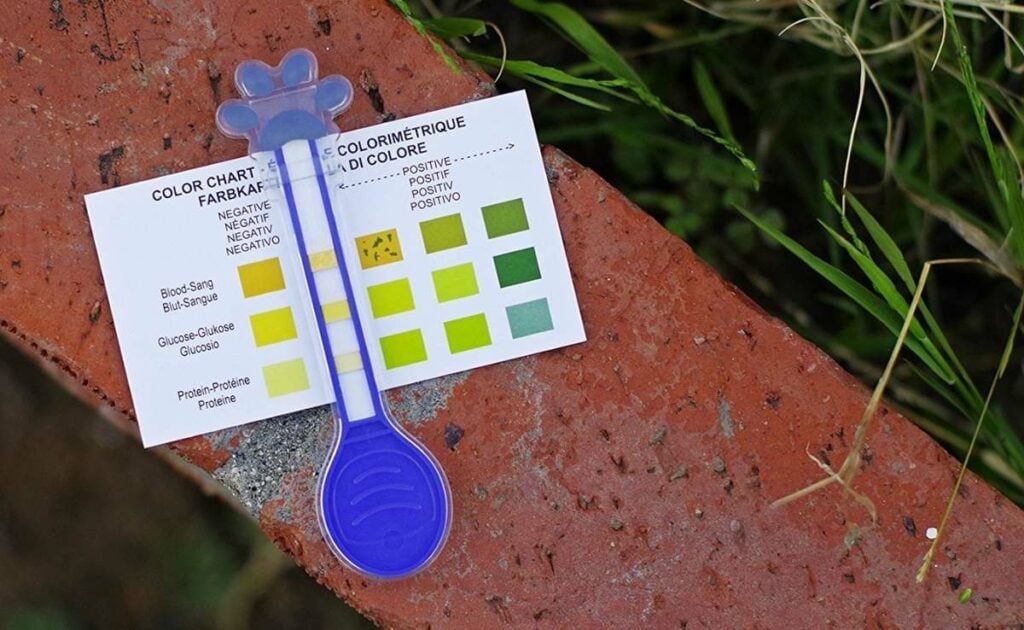
Your dog can’t point to where it hurts. Diagnostics are how vets uncover what’s really going on beneath the surface, and while they’re often lifesaving, they’re also a major reason routine visits balloon into unexpected bills.
These tools detect disease early, guide treatment, and sometimes mean the difference between recovery and heartbreak. But clarity comes at a cost.
Common Diagnostic Test Costs
| Test | Purpose | Cost |
|---|---|---|
| Ultrasound | Internal organ imaging | $175 |
| Echocardiogram | Heart structure/function | $250 |
| Thyroid test | Hormonal imbalance check | $55 |
| Liver panel | Liver function and enzymes | $45 |
| Basic bloodwork | Baseline health screening | $130 |
| CT scan | Detailed 3D imaging | $1,345 |
| CT interpretation | Specialist review of imaging | $310 |
| Biopsy | Sample tissue for disease | $150 |
| Lab work | General analysis (often bundled) | $250 |
| X-rays (radiographs) | Bone or internal issue screening | $525 |
| Flu test | Infectious respiratory screening | $330 |
| Needle aspirate | Sampling lump or fluid | $55 |
Tip: If your vet recommends multiple tests, ask if they can be bundled or if there are more affordable alternatives. Some clinics offer diagnostic packages for seniors or specific symptoms.
Accidents & Illnesses: Preparing for the Unexpected
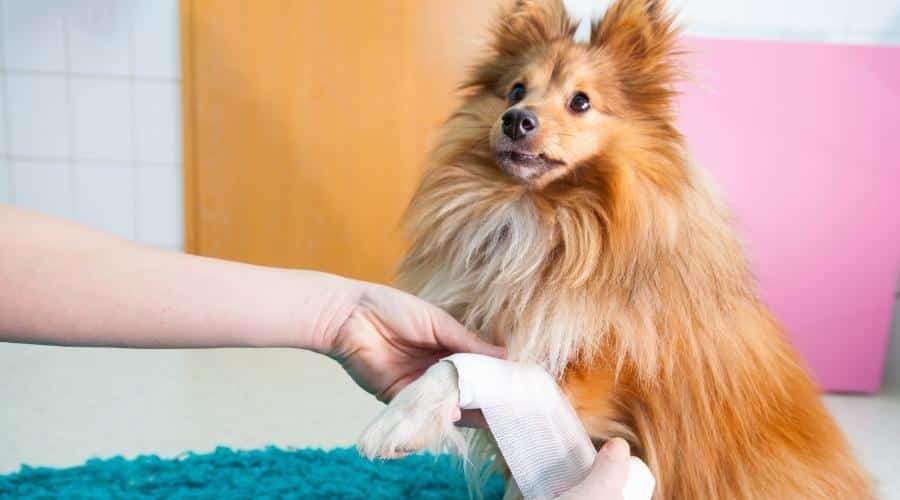
One wrong jump. One sharp yelp. And suddenly, you’re at the emergency vet at 2 a.m., panicked, exhausted, and holding your breath as you hand over your credit card.
Illnesses and injuries don’t wait for payday. And the price of urgent care can feel like a second blow after the emotional one.
Emergency Vet & Sick Visit Costs
| Service | Cost |
|---|---|
| General exam (sick visit) | $45-$75 |
| Emergency exam | $180-$800 |
| Holistic consult | $175 |
| Overnight stay | $600+ |
| Sedation* | $50-$90 |
| Induce vomiting | $110 |
| Anal sac abscess | $256 |
| Medical waste disposal fee | $7-$45 |
| Laceration repair | $275 |
Visual Guide: Common Accidents and Illnesses in Dogs
Accidents and illnesses happen fast, and they’re more common (and costly) than many pet parents realize.
Below are five of the most frequently filed health claims from one of our top-rated pet insurance providers, Healthy Paws. We’ve included real-world average costs to give you a clear sense of what you could face without insurance.
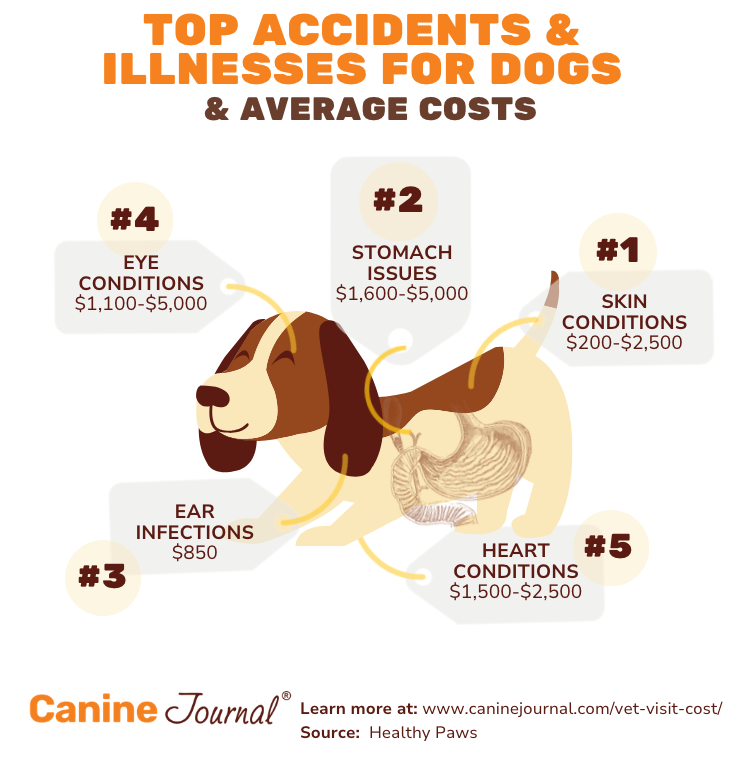
Insurance can help offset up to 100% of these expenses. Learn how coverage works in our dog insurance comparison guide.
Common Medications & What They Actually Cost
Medications often seem like an afterthought until the itemized bill hits. Here’s a look at what common prescriptions cost at many vet clinics:
| Medication | Strength/Quantity | Price |
|---|---|---|
| Ampicillin | 100mg/ml | $20 |
| Atropine | .54mg/ml | $25 |
| Benadryl (diphenhydramine) | 50mg/ml | $24 |
| Buprenorphine | 0.6mg/ml, 0.15ml | $50 |
| Carprofen | 25mg, 7 tablets | $40 |
| Carprofen | 75mg, 3 tablets | $21 |
| Carprofen | 50mg/ml, 0.79ml | $64 |
| Cephalexin | 250mg, 40 tablets | $25 |
| Cephalexin | 500mg, 20 tablets | $47 |
| Cephalexin | 500mg, 30 tablets | $29 |
| Cerenia | not specified | $85 |
| Clavamox | 125mg, 10 tablets | $52 |
| Clindamycin | 150mg, 14 tablets | $22 |
| Convenia | 0.9ml | $94 |
| Deracoxib | 25mg, 5 tablets | $24 |
| Doxycycline | 100mg, 7 tablets | $20 |
| Easotic Otic Suspension | 10ml | $45 |
| Gabapentin | 300mg, 30 tablets | $28 |
| Hydrocodone/Homatropine | 5mg/1.5mg, 21 tablets | $104 |
| Maropitant Citrate | 10 mg/ml, 2ml | $80 |
| Meloxicam | 7.5mg | $10 |
| Methadone HCL | 10 mg/ml | $60 |
| Metronidazole | 250ml, 15 tablets | $17 |
| Sucralfate | 1 gram, 20 tablets | $20 |
| Vetprofen (Carprovet) | 75mg, 4 tablets | $27 |
Tip: Ask your vet for a written prescription. You can often fill it for less through licensed online pharmacies like Chewy, 1-800-PetMeds, or even human pharmacies with pet programs.
Cancer Treatments: Navigating Complex Decisions
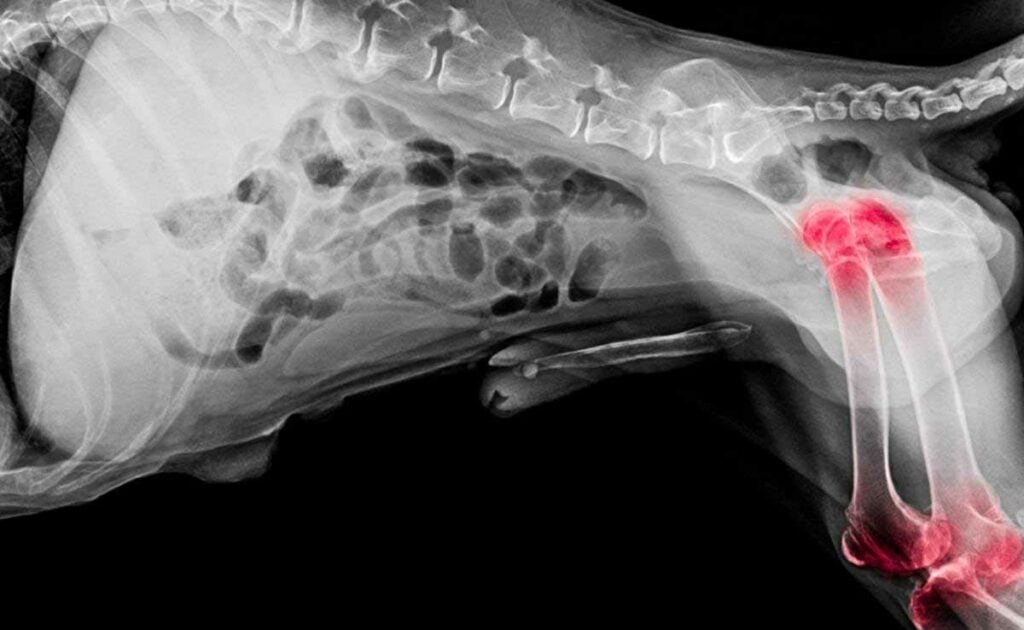
Hearing “it’s cancer” from your vet is gut-wrenching. It’s emotional, overwhelming, and often comes with more questions than clear answers.
Pet cancer cases are on the rise, and while treatment options are more advanced than ever, they can rival the cost of human care. That’s why emotional clarity and financial planning are both essential.
| Service | Cost |
|---|---|
| Oncology consult | $210 |
| Follow-up reassessment | $105 |
| Chemotherapy (per treatment) | $250 |
| Chemo administration fee | $100 |
| Tonsillectomy (tumor removal) | $1,250 |
| Lymph node excision | $330 |
| Anesthesia (general)* | $710 |
| IV fluids | $220 |
| Additional meds & fees | $1,145+ |
Not every cancer diagnosis needs chemo or surgery.
Ask your vet about prognosis, palliative options, and what gives your dog the best quality of life, not just more time.
Miscellaneous Services: The Hidden Costs That Still Hit Hard
Not all procedures fall neatly into routine or emergency categories, but that doesn’t make them any less financially or emotionally significant.
| Service | Cost |
|---|---|
| Artificial insemination | $200+ |
| Euthanasia (in-clinic) | $200 |
| Cremation (individual) | $155 |
Even planned services like breeding or end-of-life care carry weight and cost. Planning ahead gives you more control and peace during difficult moments.
5 Reasons Veterinary Costs Are Escalating
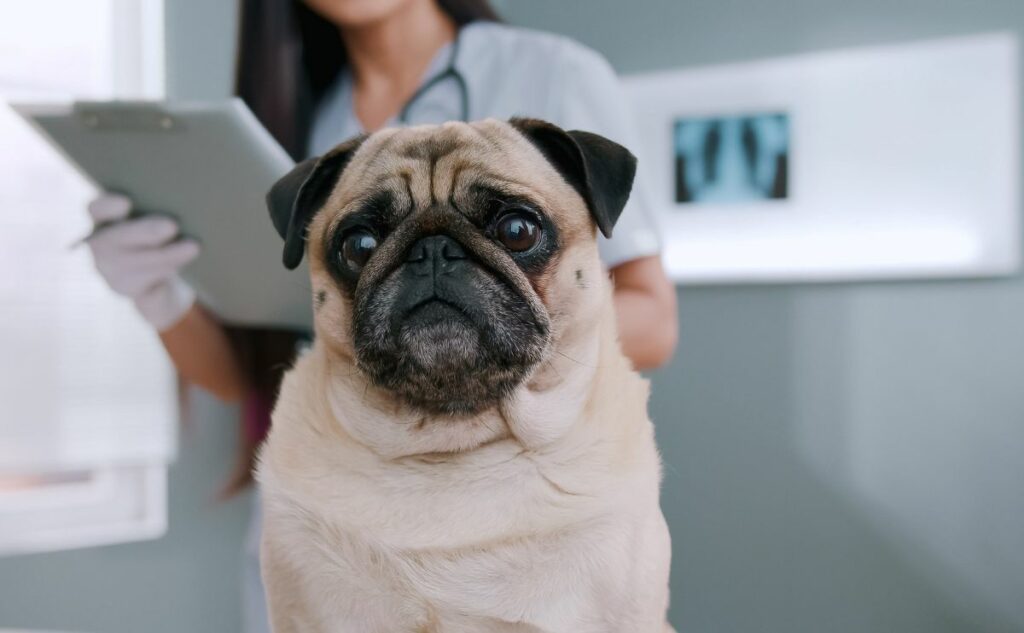
If you’ve felt like vet bills have skyrocketed in recent years, you’re absolutely right. According to the San Francisco Chronicle, veterinary costs have surged by more than 60% over the past decade. So what’s driving the increase?
It’s not price gouging. It’s the ripple effect of a fast-evolving industry and shifting pet parent expectations.
1) More Advanced Tech, More Expensive Tools
Today’s clinics are equipped with CT machines, laser surgery, ultrasound, and digital monitoring that rival human hospitals. These tools save lives, but they’re costly to buy, operate, and maintain.
2) The Rise of Specialty Care
Need a veterinary oncologist? Neurologist? Dermatologist? They exist, and they come with board certifications, rare expertise, and higher fees, just like their human counterparts. As treatment options expand, so do the bills.
3) Corporate Consolidation = Less Pricing Transparency
More clinics are being acquired by corporate hospital chains, which may prioritize profits over people. That often results in standardized pricing, reduced flexibility, and fewer opportunities for financial negotiation.
4) Vet School Debt Is Crushing
The average veterinary school debt exceeds $150,000, according to the AVMA. Young vets enter the workforce needing salaries that cover their loans, living costs, and years of specialized training. All of which factor into service pricing.
5) Our Pets Are Family & That Changes Everything
Gone are the days when pets slept outside. Today, they’re beloved family members, and we’re willing to invest thousands in healing them, not just “making them comfortable.” This emotional shift has raised demand for advanced care across the board.
All of this trickles down into the final invoice. The more we expect from modern veterinary care, the more it costs to deliver.
Behind the Scenes: What Veterinary Clinics Really Pay For

Ever wonder why a simple visit costs hundreds or why there’s a line item for everything from bandages to medical waste? Running a veterinary clinic comes with enormous and often invisible expenses.
Here’s where your money actually goes:
Staff & Retention
Vets don’t work alone. Clinics rely on a team of veterinary technicians, receptionists, kennel attendants, and administrative staff, all of whom need competitive wages, health benefits, and training.
High turnover in the industry has only increased these costs, and clinics must pay more to keep skilled, compassionate people on staff.
Facility Costs
Rent, utilities, property taxes, insurance, cleaning, and compliance, every square foot of that clinic comes with a price tag. Urban clinics especially deal with high overhead just to keep the lights on.
Equipment & Medical Supplies
From surgical tools to IV pumps to sterile gauze, everything must be maintained, sanitized, and stocked, and often in bulk. Even basic items like syringes and gloves add up quickly when used multiple times a day.
Medications & In-House Pharmacies
Many clinics stock prescription drugs on-site, which means they absorb upfront costs from manufacturers and distributors and must manage expiration dates, storage, and legal compliance.
Bottom line: Veterinary care isn’t just a medical service. It’s a complex, high-cost business with slim margins and zero shortcuts.
Pet Insurance: A Safety Net for You and Your Furry Friend

When a sudden illness or accident strikes, the last thing you want to worry about is how you’ll afford the care your pet needs.
Pet insurance helps soften the blow, turning a potential four-figure emergency into a manageable monthly cost and giving you peace of mind when your pup needs you most.

What Pet Insurance Can Cover
While every plan is different, most offer coverage for:
- Accidents and emergencies
- Illnesses, including chronic and hereditary conditions
- Diagnostic testing, surgeries, and hospital stays
- Prescription medications
- Some include dental care, rehab, or alternative therapies
Most policies reimburse 70% to 90% of eligible costs, depending on your deductible and plan level. That can mean the difference between lifesaving care and heartbreaking decisions.
Want to see how providers stack up? Check out our pet insurance reviews for up-to-date comparisons on pricing, coverage, and customer satisfaction.
How It Works
Think of pet insurance as health insurance for people but with a simpler claims process. You pay the vet upfront, then submit a claim and get reimbursed for eligible expenses.
Instead of draining your emergency savings or paying off a credit card, you’ll have help covering costly procedures like surgery, chemotherapy, or chronic condition management.
And with premiums often averaging around $50/month for dogs, the math makes sense, especially when you consider that even a single emergency visit can cost over $1,000.
Pro tip: Enroll early. Pre-existing conditions are usually not covered, so it pays to sign up while your pet is healthy.
Alternatives to Insurance: How to Save Without a Policy
We get it, pet healthcare can feel out of reach, especially if you’re living paycheck to paycheck or caring for a pet with pre-existing conditions.
While we always recommend exploring pet insurance first, it’s not feasible for everyone. That doesn’t mean you’re out of options.
Low-Cost & Nonprofit Options
- RedRover Relief: Offers grants to pet owners facing financial hardship during medical emergencies.
- Vet schools and teaching hospitals: Many offer low-cost procedures performed by veterinary students under professional supervision.
- Local animal shelters or rescue groups: Some run community clinics offering vaccines, spay/neuter, and dental care at reduced rates.
Online Prescription Savings
Sites like Chewy, PetCareRx, and 1-800-PetMeds often sell FDA-approved pet medications for less than your vet’s in-house pharmacy.
Just be sure to use an online pharmacy that is verified. Check Safe.Pharmacy to confirm legitimacy.
Use Free Clinics (Yes, They Exist)
Some vets host free clinics several times a year, waiving exam fees for basic services like vaccines, deworming, or checkups. If your current vet doesn’t offer this, contact your local Humane Society or animal control office for a list of upcoming events in your area.
There are more financial resources out there than most people realize. We’ve put together a full guide on how to get financial assistance for pet care, including national programs, nonprofit support, and CareCredit options that can help you bridge the gap.
Prevention Is Better Than Cure: Simple Steps That Save Lives (And Money)
Whether or not you invest in pet insurance, one truth holds: preventative care is the most powerful tool you have to help your dog live a long, healthy life (and avoid massive vet bills later).
Neglect is costly. But small, consistent habits? They can add years to your pup’s life and save you thousands along the way.
- Schedule annual physical exams and vaccines
- Feed high-quality food appropriate for your dog’s age, size, and health needs
- Brush their teeth, clean their ears, and trim nails regularly
- Use flea, tick, and heartworm prevention all year long
- Keep them at a healthy weight with daily movement and play
The $200 you spend now on preventive care could save you over $3,000 in treatment down the line.
And beyond the financial benefit, you’re giving your dog the best gift possible: a longer, happier, healthier life by your side.
Methodology: How We Gathered This Information
This article was developed using a people-first approach, combining first-hand experience from our team of pet owners, veterinary professionals, and researchers with up-to-date data from authoritative sources.
Our Process Included:
- Direct insights from our team’s personal vet visits across the U.S., including routine checkups, emergency care, dental procedures, and surgeries.
- Price comparisons from veterinary clinics in major cities and rural areas to capture regional cost variability.
- Data sourcing from credible organizations and recent veterinary industry reports.
- Fact-checking with current figures (2023–2025) to reflect the most recent cost trends and industry shifts.
All content was written and reviewed by contributors with hands-on experience caring for pets and navigating veterinary care systems. While we’re not veterinarians, we collaborated with professionals to ensure accuracy and relevance.
This hybrid methodology ensures the guide reflects both real-world experience and reliable, current data, so you get information that’s practical, trustworthy, and empathetic to what pet owners actually face.
Why Trust Canine Journal?
Vet bills can feel overwhelming and, sometimes, downright shocking. At Canine Journal, we don’t just write about these costs; we live them. We know how important it is to be financially and emotionally prepared for every stage of your pet’s care.
Kimberly Alt, the lead author of this article, is not only a lifelong dog lover who’s been through countless vet visits, from routine checkups to after-hours emergencies and surgery, but she’s also a recognized pet insurance expert. Kimberly has spent more than a decade diving deep into the world of pet’s health and insurance, helping pet parents understand their options and save money when unexpected bills hit.
Because she specializes in pet insurance, Kimberly brings a unique perspective to veterinary costs. She knows exactly how expensive care can get and, more importantly, how pet insurance can ease that burden. Her expertise allows her to offer not just accurate cost breakdowns but also practical, proven strategies to reduce those costs.
